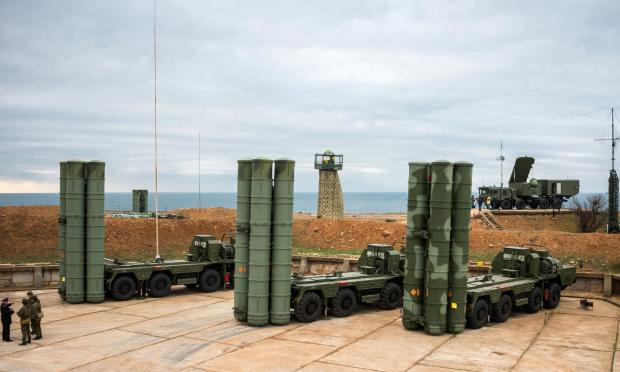Turkey may soon deploy its Russian-made S-400 anti-aircraft systems on the Iraqi border, a move reported by the Turkish daily Hurriyet on 10 April 2024, which could mean the inaugural operational use of these systems for the first time since their acquisition in 2019.
This anticipated deployment is seen as a counter to recent regional threats, particularly Iranian missile attacks, and is seen as a direct aggressive move by Turkey against Iran.
The deployment of the "Turkish" S-400 Triumf on the Iraqi border ( if implemented) will be another secret US-Turkey deal, made to secure the Inchirlik base and the radar at Qiurechik, in any Iran-Israel scenario.
Also, if the Turks are allowed to fully operationally deploy the S-400, it will be a license to operate it for the first time since it was received from Russia.
The "neighbors" have reportedly persuaded the Americans to place the Russian missiles somewhere that would be useful to both sides, except that Americans are unaware that once the Turks deploy them, they can quickly place them near the coast of Asia Minor, threatening the Aegean Sea.
Finally, the unbearable pressure to give very expensive missile systems in any form to Ukraine (which is in a phase of retreat and possible defeat by the Russians) concerns only Greece-Spain, and not the always privileged Turkey.
What is the Russian S-400 Triumf missile system
The S-400 Triumf missile system, known as the SA-21 Growler in NATO parlance, is a modern long-range air defense system designed and built by Almaz-Antey.
It is equipped to engage different targets, including aircraft, tactical and ballistic missiles, as well as cruise missiles such as the Tomahawk. The S-400 system is capable of destroying targets up to 400 km away and at altitudes of up to 30 km.
It can also detect stealth aircraft and simultaneously engage up to 36 targets at different altitudes and distances.
Since entering service with the Russian armed forces in 2007, the S-400 has been deployed in Syria and sold to countries such as Turkey, China, India and Algeria.
The system incorporates multiple radars for meticulous surveillance and command, featuring 92N2E Grave Stone firing radar and 91N6E Big Bird acquisition radar.
Command and control vehicles, such as the 55K6E, control air surveillance and threat prioritisation, integrating the system into a layered air defence network.
The S-400's modularity facilitates the use of a variety of missile and radar types, thus increasing its ability to address various threat scenarios.
The background with Turkey and the current US stance
Ankara's procurement of these systems in 2019 caused US outrage due to the incompatibility of the S-400 with NATO systems and security concerns over Western technologies.
Despite persistent US warnings about their activation and subsequent sanctions, the S-400s have yet to be operationally deployed by the Turkish government.
According to Ankara, the current decision to deploy is intended as a defensive measure against drones and potential significant ballistic threats from Iran, which recently carried out an unprecedented attack on Israel.
Why are Turkish S-400s being deployed on the border with Iraq?
Suleyman Ozeren, a lecturer at the American University and senior fellow at the Orion Policy Institute, believes that the potential development serves several strategic goals for Ankara.
The continued presence of S-400s in Turkey remains a major point of contention with the United States.



